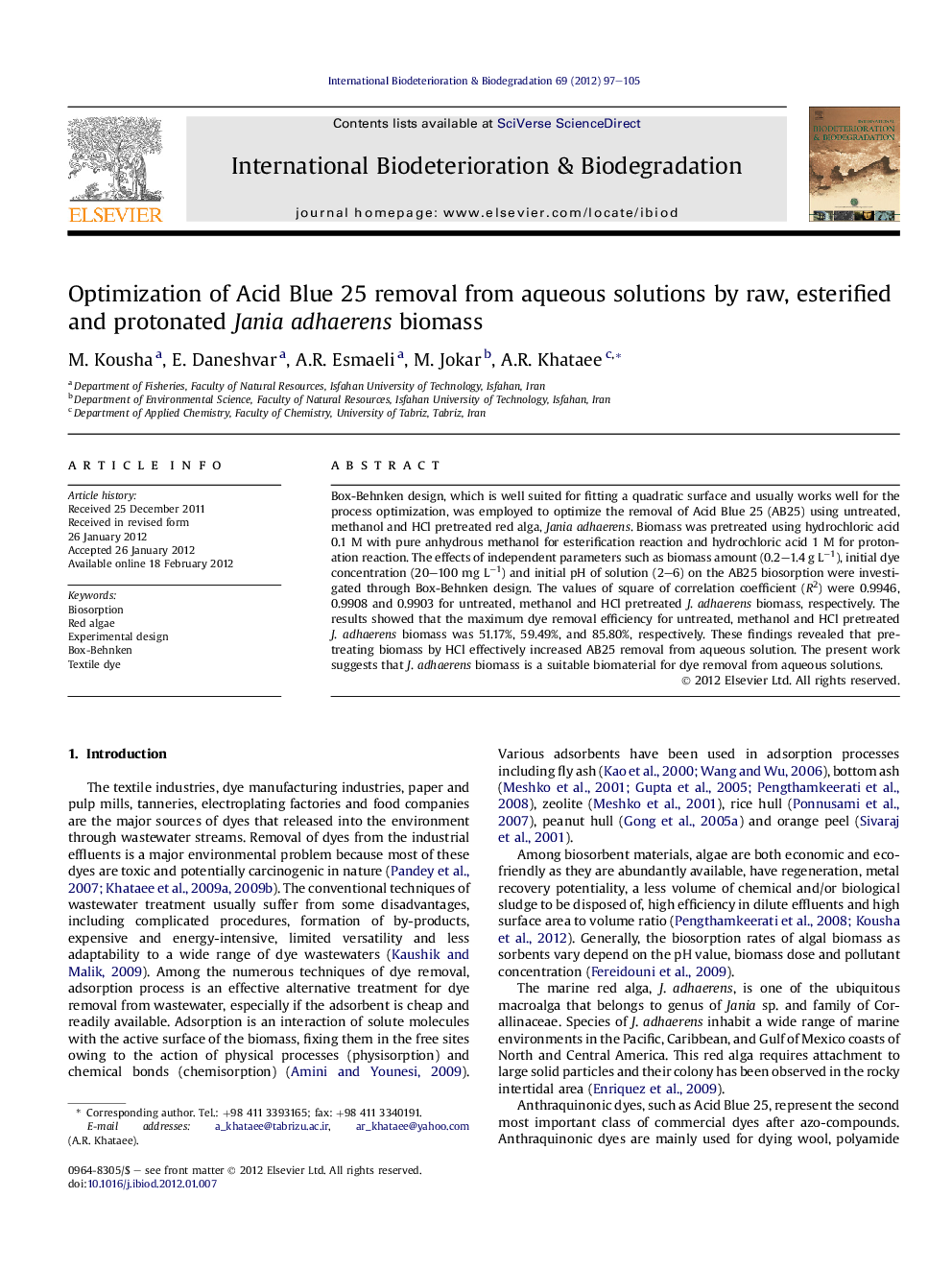| Article ID | Journal | Published Year | Pages | File Type |
|---|---|---|---|---|
| 4365243 | International Biodeterioration & Biodegradation | 2012 | 9 Pages |
Box-Behnken design, which is well suited for fitting a quadratic surface and usually works well for the process optimization, was employed to optimize the removal of Acid Blue 25 (AB25) using untreated, methanol and HCl pretreated red alga, Jania adhaerens. Biomass was pretreated using hydrochloric acid 0.1 M with pure anhydrous methanol for esterification reaction and hydrochloric acid 1 M for protonation reaction. The effects of independent parameters such as biomass amount (0.2–1.4 g L−1), initial dye concentration (20–100 mg L−1) and initial pH of solution (2–6) on the AB25 biosorption were investigated through Box-Behnken design. The values of square of correlation coefficient (R2) were 0.9946, 0.9908 and 0.9903 for untreated, methanol and HCl pretreated J. adhaerens biomass, respectively. The results showed that the maximum dye removal efficiency for untreated, methanol and HCl pretreated J. adhaerens biomass was 51.17%, 59.49%, and 85.80%, respectively. These findings revealed that pre-treating biomass by HCl effectively increased AB25 removal from aqueous solution. The present work suggests that J. adhaerens biomass is a suitable biomaterial for dye removal from aqueous solutions.
► Biosorptive removal of a textile dye by using a red alga. ► Optimization of the biological treatment process by Box-Behnken design. ► Comparative decolorization by raw, esterified and protonated Jania adhaerens.
